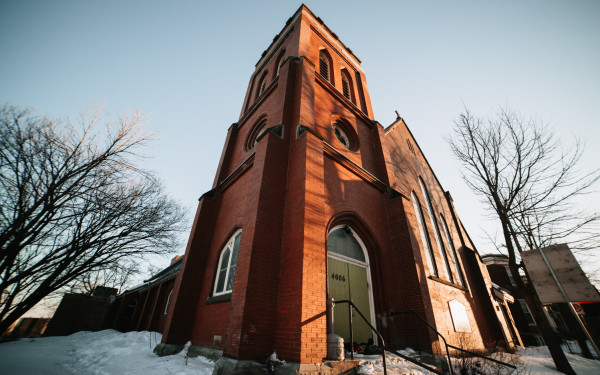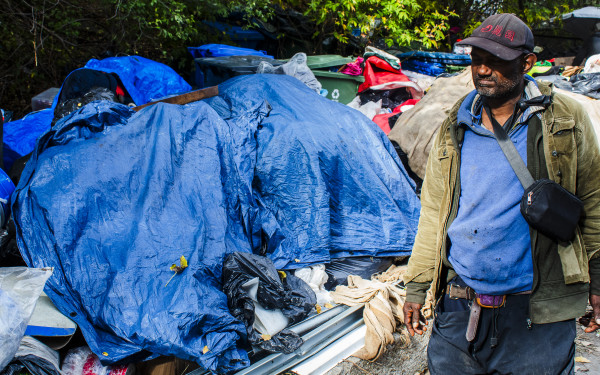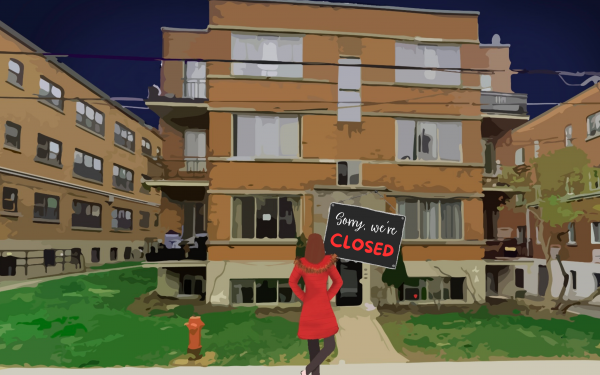Montreal housing crisis has experts discussing short and long-term solutions
Calls for the government to address the lack of accessible emergency shelters and social services
In March 2020, the pandemic forced shelters to adopt regulations that limit the number of people they admit.
The emergence of the highly contagious Omicron variant, on top of the extreme cold snap the city has been dealing with, has added yet another layer of stress on an ineffective system. For the vulnerable, this crisis has had severe consequences.
On Jan. 18, 2021, Raphaël André died overnight just steps away from where he sought shelter during the day. In the year since, two more people experiencing homelessness in the city lost their lives.
Read more: The Raphaël Napa André memorial: One year later
Though there is little debate among experts that something needs to change in order to better protect vulnerable people, discussion persists on how to best tackle the issue.
“I’m often asked the question, ‘How many emergency beds are there in Montreal?’ and my answer is: that doesn’t matter. There is never going to be enough if our system continues to operate the way it has for the past 100 years,” said Sam Watts, CEO of Welcome Hall Mission.
The current charity model, as Watts describes it, is an effective emergency service, yet he believes it often neglects the long-term needs of many people facing housing insecurities. He questions whether or not funds are being directed and allocated efficiently. Watts added that shelter programs should be further tied into the healthcare system. Focusing on the link between homelessness and the delivery of healthcare in an urban setting will offer tools that aren’t solely short term, or band-aid solutions.
David Chapman, project manager at Resilience Montreal, is careful not to let the discussion give people the perception that long-term social housing is the solution. While he understands the integral role social housing plays in helping people reintegrate back into society, he strongly advocates for the development of more accessible emergency shelters.
Chapman also said he understands how tempting it is to redirect funds from emergency resources towards low-cost housing, but that it can’t be done at the expense of the shelters that keep people alive. He said approaching the issue with the mentality that social housing will present better solutions risks overlooking the deeper problems that are related to homelessness.
“We’re not going to be housing Raphaël André,” he said. “No one will ever house him in a low-cost apartment because he is dead. And he’s dead because there weren’t adequate emergency services.”
While it might seem as though there is a divide among experts between the need for more funding for long-term houses versus emergency services, everyone does agree on one thing. The process of helping those experiencing homelessness settle into housing is quite nuanced.
Each shelter and community face different realities, explained Chantal Laferrière, executive officer at St Michael’s Mission. She added that those who seek out shelter resources each have their own needs and so they must be treated as distinct individuals. Laferrière said the focus of just placing them in housing is not working because St Michael’s Mission is constantly admitting more people.
Laferrière said she has clientele that have been on their own for 40 years. After so many years of social disconnect they require more time and resources to help them grow accustomed to everyday tasks, such as working, cleaning, and sometimes even sleeping in their own bed. Having intervention workers available for support for people once they move into their own place would not only provide guidance, but also help with potential loneliness that is often felt during the transition into housing.
Watts agrees that efforts to connect with unhoused individuals while they reintegrate into a community is a necessary step in improving the system.
“One of the driving factors for people becoming homeless is social disconnection,” he said. “We’ve got to get them reconnected socially, not just in an apartment with four walls.”


_600_832_s.png)




_600_375_90_s_c1.jpg)